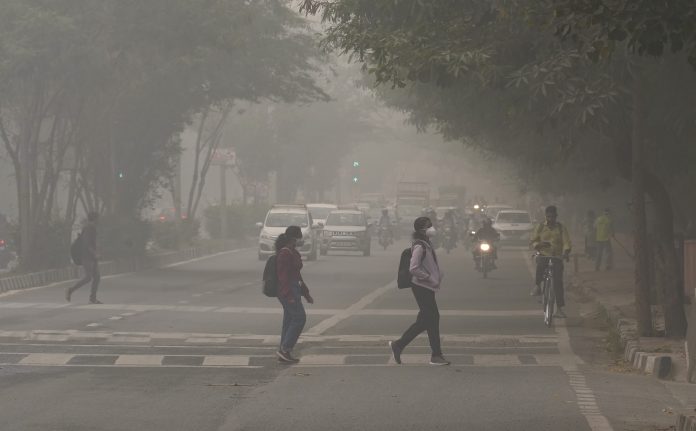India’s ranking as the world’s third-most polluted country, revealed in the 2023 World Air Quality Report, is a grim reminder of a public health crisis demanding immediate attention. With PM2.5 concentrations exceeding ten times the WHO’s safe limit, cities like Begusarai and Delhi are shrouded in a toxic haze that jeopardises the well-being of millions. Indian cities dominate the list of most polluted with Begusarai topping the charts. This is not merely a matter of statistics; it’s a matter of life and death. The health risks associated with air pollution are well documented. The report itself underscores the link between PM2.5 exposure, respiratory illnesses, and even exacerbated allergic reactions. This silent killer claims millions of lives annually, robbing citizens of health and productivity.
Various factors are the culprits, some natural and others manmade. Climate change is one layer of complexity. The report rightly emphasises clean energy generation as a crucial solution. Dependence on fossil fuels, particularly coal, is a major contributor to air pollution. Investing in renewable energy sources like solar and wind power offers a cleaner, more sustainable alternative. This shift will not only improve air quality but also reduce the carbon footprint. However, clean energy alone is not enough. Addressing industrial emissions is equally important. Upgrading industrial infrastructure to adopt cleaner technologies and stricter regulations on pollution control are necessary steps. The transportation sector also demands attention. Promoting public transport systems, incentivizing electric vehicles, and phasing out older, polluting vehicles can significantly reduce emissions.
Additionally, addressing dust and construction-related pollution, prevalent in many Indian cities, requires stricter regulations and enforcement. As mega-infrastructure projects unfold across nearly every city, flagrant disregard for construction regulations has become alarmingly common. These violations serve as significant contributors to the proliferation of suspended particle impurities in the air.
Northern India continues to wrestle with the persistent issue of crop burning, leading to the hazardous phenomenon of smog enveloping the region during the winter months. It is imperative to urgently seek a sustainable solution to this significant source of pollution. With pollution levels already exceeding WHO standards, failure to take corrective action promptly could precipitate a looming disaster.
Public awareness plays a crucial role. Simple measures like reducing car usage, opting for carpooling, and using masks on high-pollution days can make a difference. Real-time air quality monitoring systems can empower citizens to make informed decisions about their activities. Additionally, investing in air quality forecasting can help authorities initiate preventive measures during periods of high pollution. International cooperation is another key factor. Sharing best practices, collaborative research on clean technologies, and knowledge transfer from developed nations can accelerate India’s progress towards cleaner air. The fight for clean air is a collective responsibility. The Government, industries, and citizens all have a role to play. The Government must set ambitious targets, enact stricter regulations, and invest in clean energy infrastructure. Industries must adopt cleaner technologies and prioritise responsible waste management. Citizens must make informed choices that prioritise public health and environmental sustainability.
By prioritising clean energy, implementing stringent regulations, and fostering public awareness, the nation can begin to dismantle this choking crisis. The future health and well-being of its citizens depend on it. Clean air is not a luxury; it’s a fundamental right.
Trending Now
E-Paper


